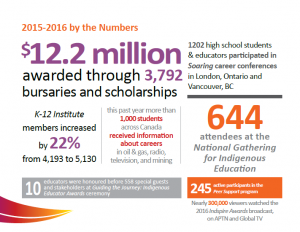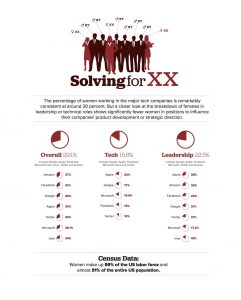In my third research weblog I decided to collect some recent resources that give me a better understanding of how globalization (driven in huge parts by a rapidly developing internet infrastructure) impacts indigenous communities. This will contribute to my research essay about the impact of internet infrastructure in remote indigenous communities and consequences for distance education.
The impact of globalization on Indigenous Intellectual Property and Cultures
Lecture by Professor Dr. Erica-Irene A. Daes, 25 May 2004, Museum of Sydney, Sydney Australia.
https://www.humanrights.gov.au/news/speeches/impact-globalization-indigenous-intellectual-property-and-cultures
Globalization of Cultural Heritage: Issues, Impacts, and Inevitable Challenges for Nigeria
Culture is the totality of learned, socially transmitted customs, knowledge, material objects and behaviour. It includes the ideas, value, customs and artefacts of a group of people (Schaefer, 2002). Culture is a pattern of human activities and the symbols that give these activities significance. It is what people eat, how they dress, beliefs they hold and activities they engage in. It is the totality of the way of life evolved by a people in their attempts to meet the challenges of living in their environment, which gives order and meaning to their social, political, economic, aesthetic and religious norms and modes of organisation thus distinguishing people from their neighbours. In Federal Republic of Nigeria (1988), culture comprises material, institutional, philosophical and creative aspects.
The process of expanding culture has been under way for many centuries, but technologies have increased the speed and have also broadened the distribution of cultural elements beyond communities and nations’ territorial frontiers.
http://www.webpages.uidaho.edu/~mbolin/nwegbu-eze-azogwa.htm
Globalisation and crisis of cultural identity
Globalization is a dynamic process which impacts differentially on various cultures around the world. It permeates cultural boundaries and in the process results in the spread of Western ideologies and values across the world. This paper investigates the relationship between globalization and cultural identity crisis underlying assumption that globalization is manifested in the intercultural penetration processes which have substantial effects on the cultural identities.
http://www.interesjournals.org/full-articles/globalisation-and-crisis-of-cultural-identity.pdf?view=inline
Globalization: its impacts on indigenous communities
According to the Anthropological Survey a total of 4,635 communities are now to be found in India. Out of this total, ‘tribal’ or Indigenous communities number 732. Under globalization. The impact of globalization on the Indigenous communities is manifold, and often they are ones most negatively affected. Under globalization, it is the tribal Indigenous areas that have had to face the attacks of massive developmental projects. Cases of displacement of tribal populations have increased in India. Commercial activities have also introduced alien forces, cultures and influences into the traditionally insulated life and culture of the Indigenous peoples. Deprivation of land and forests are the worst forms of oppression that these people experience. It has resulted in the breakdown of community life and a steady cultural death or ‘ethnocide ‘. The tribal people are exterminated by a process of attrition, through which their lands are taken away, their rivers poisoned, their cultures undermined and their lives made intolerable. Hunters and gatherers, forest produce collectors, fisherfolk, both inland and marine, and the rural artisans are the victims of globalization and modern development through appropriation of people’s resources for industrial advancement, especially in association with capital-intensive, machine-oriented technology.
http://www.anthropologywa.org/iuaes_aas_asaanz_conference2011/0047.html
Globalization and its Special and Significant Impacts on Indigenous Communities
Globalization is really a painting of the earth whose rendering can never be truly fixed. Yet, it is emblematic of the social dimensions of human interactions. Globalization has particular urgency for the world’s Indigenous Peoples. Many Indigenous systems of collective economic production and distribution do not conform to capitalism’s cultural emphasis on individual accumulation. This manuscript explores the challenges to Indigenous societies from economic hegemonic regimes, bioprospecting, nature conservation, and extended continuing and derivative impacts. Crucially, Indigenous Peoples do not passively accede to domination by global market forces. Resistance, negotiation, and consultation are common features of Indigenous communities’ interactions with transnational corporations and international economic policy bodies, but the definition and content of these terms play out very differently for distinct societies. The article suggests appropriate protocols for engaging Indigenous societies and recognizes alternatives to domination. It concludes with an examination of how Indigenous Peoples may be embracing internet technologies to further their claims to self-determination.
https://papers.ssrn.com/sol3/papers.cfm?abstract_id=2070204
Resources:
Daes, E. (2012, December 13). The impact of globalization on Indigenous Intellectual Property and Cultures. Retrieved November 05, 2017, from https://www.humanrights.gov.au/news/speeches/impact-globalization-indigenous-intellectual-property-and-cultures
Globalization: its impacts on indigenous communities. (2011). Retrieved November 05, 2017, from http://www.anthropologywa.org/iuaes_aas_asaanz_conference2011/0047.html
Hershey, Robert, Globalization and its Special and Significant Impacts on Indigenous Communities (May 26, 2012). Arizona Legal Studies Discussion Paper No. 12-19. Retrieved November 05, 2017, from https://ssrn.com/abstract=2070204
Kaul, V. (2012). Globalisation and crisis of cultural identity. Retrieved November 05, 2017, from http://www.interesjournals.org/jribm/december-2012-special-issue-vol-2-issue-13/globalisation-and-crisis-of-cultural-identity
Nwegbu, M. U., Eze, C. C., & Asogwa, B. E. (2011). Globalization of Cultural Heritage: Issues, Impacts, and Inevitable Challenges for Nigeria. Retrieved November 05, 2017, from http://www.webpages.uidaho.edu/~mbolin/nwegbu-eze-azogwa.htm




